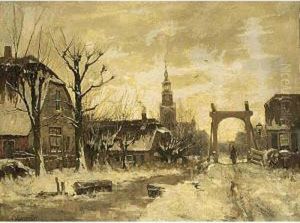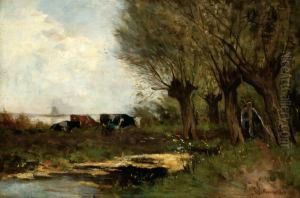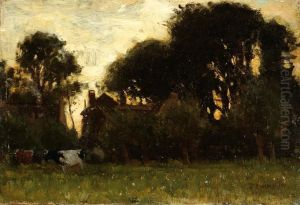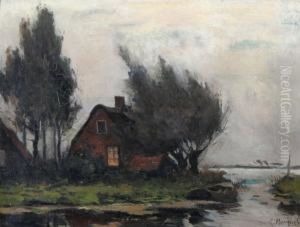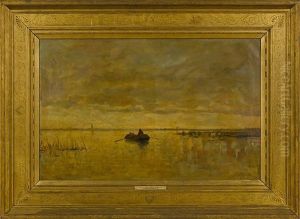Gerardus Johannes Roermeester Paintings
Gerardus Johannes Roermeester, born in 1854, was a distinguished Dutch artist, whose artistic journey reflects the rich tapestry of late 19th and early 20th-century European art. His life and work were embedded in a period of significant transition, where the echoes of Romanticism gradually gave way to the emergent voices of Modernism. Roermeester’s oeuvre, although not as widely recognized as some of his contemporaries, offers a unique lens through which to view the nuanced shifts in artistic styles and preferences of his time.
Roermeester was educated in the arts at a time when the traditional academic training was starting to be questioned by emerging movements such as Impressionism and later, Expressionism. However, details about his early education are scarce, and much of what is known about his technique and style has been pieced together from the body of work he left behind. His paintings often depicted landscapes and urban scenes, capturing the changing light and shadow with a sensitivity that suggests an influence from the Impressionist movement. Yet, he never fully abandoned the detailed realism taught in classical art academies, striking a balance that made his work uniquely his own.
Throughout his career, Roermeester remained somewhat peripheral to the major art movements of his time. He did not join the ranks of the avant-garde, nor did he strictly adhere to the academic traditions of his predecessors. This in-between status may have contributed to the relative obscurity of his work during periods when the art world's attention was focused on more radical innovations. Despite this, his paintings were well-regarded by those who knew of them, celebrated for their quiet beauty and the emotional depth with which he imbued his subjects.
Roermeester’s life and career were cut short by the outbreak of World War I, a cataclysmic event that overshadowed the European cultural scene. He died in 1918, before the war ended, leaving behind a body of work that, while modest in quantity, is rich in quality. His death marked the loss of an artist who, in a different time or with different inclinations, might have stood more prominently on the world stage. Today, scholars and art enthusiasts who rediscover Roermeester’s work find themselves captivated by the subtlety of his technique and the quiet introspection of his paintings, which offer a window into the soul of an artist who navigated the cusp of modernity with a gentle brush.
